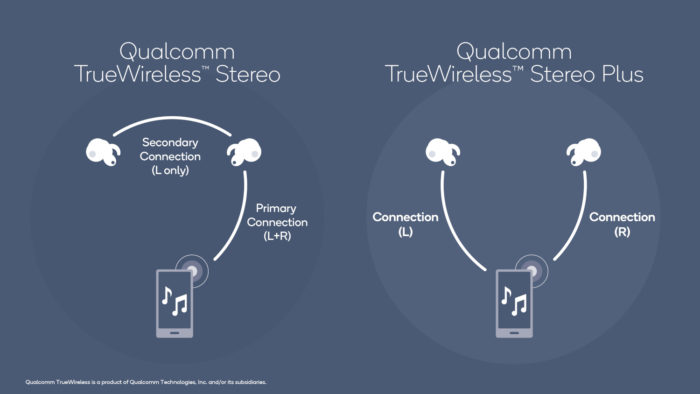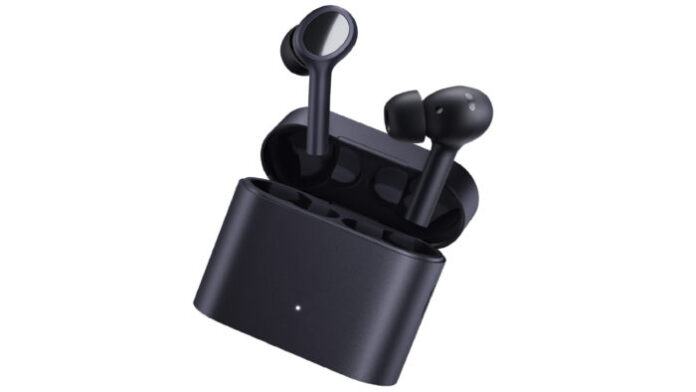The TWS technology, True Wireless Stereo, allows playing stereo sound in True Wireless headphones, those that have no wires and connect via Bluetooth with audio sources such as Samsung headphones, Xiaomi and others, which compete with Apple AirPods. In this guide, you’ll understand what TWS is and which devices are supported.
- What to Consider when buying a pair of Bluetooth headphones
- How to Know if your Apple AirPods is Original
- How to know if your AirPods are up to date
- What is an Auxiliary Port (AUX) and what’s it for?
What is TWS?
TWS stands for True Wireless Stereo, which in a less literal translation means Stereo (for Headphones) Completely Wireless. It is a technology specifically aimed at True Wireless headphones, which have no wires between them and the sound source, such as the Xiaomi Mi True Wireless Earphones 2 Pro and similar models.
There are two distinct formats, True Wireless Stereo (TWS) and True Wireless Stereo Plus (TWS+), with some differences between them.
1. True Wireless Stereo (TWS)
It is the most used audio transmission method by True Wireless headphones. In it, the Bluetooth signal connects to one of the headphones, which receives audio data from both channels, right and left. Next, the handset sends the signal from the other handset to its pair.
This method allocates only one connection between the phone and the audio source, but sound fidelity is somewhat impaired.

2. True Wireless Stereo Plus (TWS+)
True Wireless Stereo Plus (TWS+) is a proprietary technology from Qualcomm. This is an evolution of TWS, in which each of the True Wireless headphones connects directly to the audio source. This allows each of the headphones to rely on the corresponding audio signal with minimal losses.
TWS+ compatible headphones offer greater sound fidelity, but the feature also depends on whether the audio source is compatible. On Android phones, the technology was introduced by Qualcomm from the Snapdragon 845 processor, launched in 2017.
On the iPhone, the feature became available from the 2018 line (XS and XR).
Which headphones are compatible?
Overall, all True Wireless headphones are TWS compatible, but not all support TWS+. For marketing reasons, some companies often refer to True Wireless Stereo Plus as True Wireless Stereo in order to highlight the more advanced products.
What about Apple?
Apple has developed its own solutions for the AirPods, its True Wireless headphones. Since the first generation, they have had a similar feature to TWS+, which recognizes whether the user is using one or two headphones, and distributes the channels accordingly.
If the user is using one, the sound is sent in mono mode; if you use the 2, each channel is sent to the corresponding handset.
The main differences between generations of AirPods lie in the chip employed. The original model used the Apple W1, compatible with Bluetooth 4.2, while the others, such as the AirPods Pro (above) use the Apple H1 chip, with Bluetooth 5.0 support.
The advantages of H1 over the W1 are the best autonomy (longer use time per charge) and a case that accepts induction reload in the Qi standard.
TWS and TWS+
Because True Wireless headphones are all similar, and because of manufacturers’ marketing decisions, there are some important differences between TWS and TWS+.
Overall:
- Every True Wireless headset is compatible with True Wireless Stereo (TWS);
- Not every True Wireless headset supports True Wireless Stereo Plus (TWS+).
Today, the vast majority of True Wireless headphones (other than AirPods) are compatible with True Wireless Stereo Plus, and allow you to monitor the connection of both through the dedicated app, or the mobile operating system. As advantages, they offer better power management, by dispensing with the need for one of the headphones to act as a relay, and the possibility of them being used as mono headphones.
In this mode of use, the right and left signals can be sent to the two headphones, and thus the user can choose to use only one of them, or lend the second to someone else and both listen to the same content.
